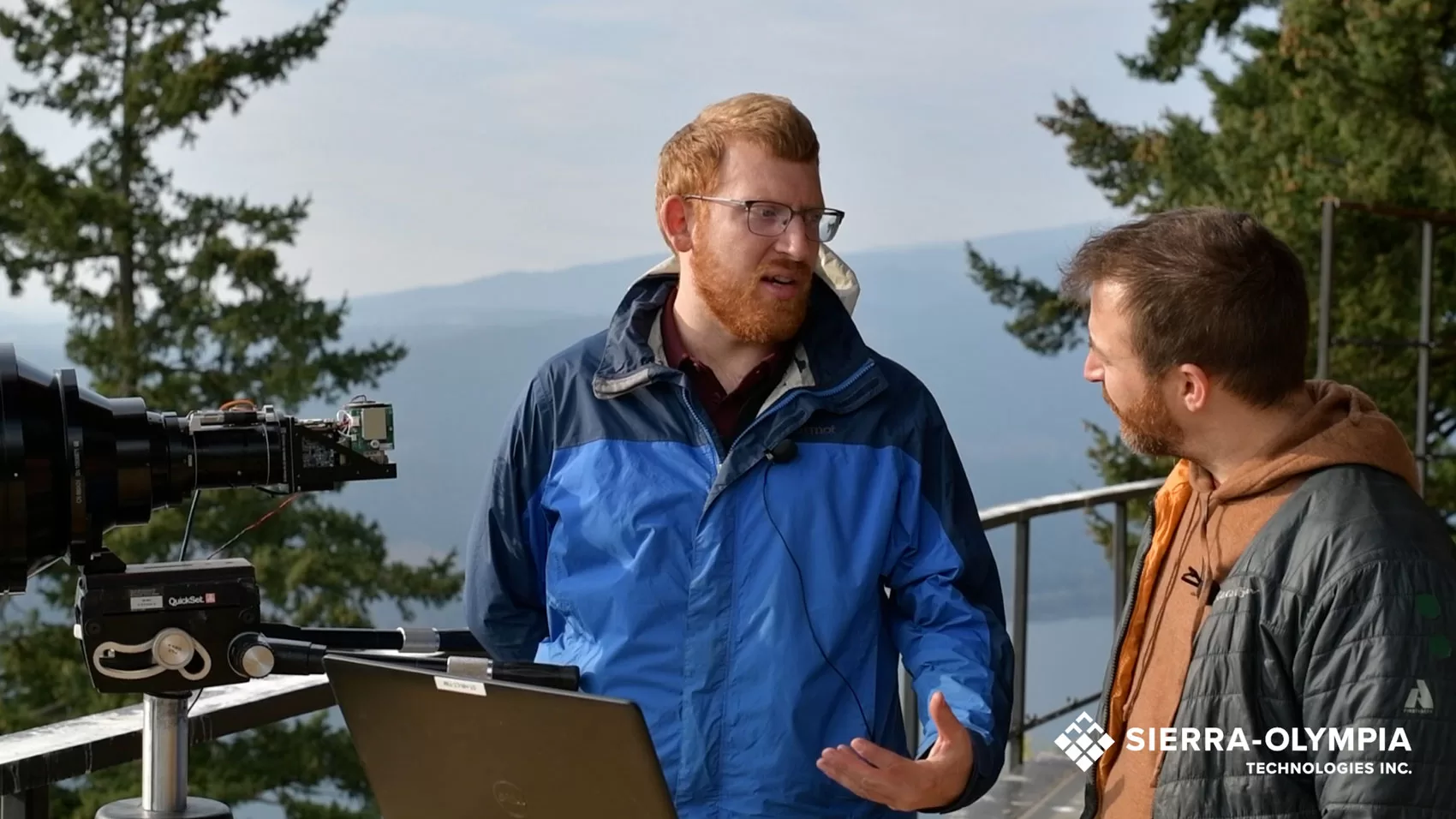Sierra-Olympia is always testing the capabilities of its products. We recently tagged along with two of our Engineers, Tim Decker and Jacob Begis, on their most recent test with the Ventus Hot 900, a system mostly used for long range security. We conducted tests to detect, recognize and identify (DRI) objects or people from far distances.
Detection – The ability to distinguish an object from its background
Recognition – The ability to classify the object as vehicle, human or other subject.
Identify – The ability to describe the object in detail, a human with a shovel, a specific type of animal.
How was this DRI test different than the last (Water vs. Land)
Water is opaque in the infrared region – we cannot see through water with an IR camera. All IR radiation is either absorbed or reflected (but not transmitted). The greater the angle of incidence, the more radiation that will be reflected, while the other radiation is absorbed and reemitted. The waves and ripples on the water and therefore induce spatial patterns of “Hot” and “Cold” on the water – “Hot” being reflections (e.g., from the sun) and “Cold” being the apparent temperature of the water from emitted radiation.
Therefore, it is easier to detect, recognize or identify a target in calm water due to a more uniform background. When watching the video, take note of how the boat is easier or harder to see depending on where in the river they are located. Sometimes the boat appears to be a similar temperature to the water, while other times it has a moderate delta-T (variation in temperature between target and background).
Another important factor is clutter. In the water there is very little clutter making it easier to pick out a target. The standard/recommended target task difficulties (for example, 0.5 cycles/target to detect a human vs. 2.0 cycles/target to detect a vehicle) are based on a variety of factors including clutter. Therefore, having less clutter in a scene will make it easier to detect, recognize and identify a target.
Predicted Results (Jacob’s Model)
For this test we had at least one colleague in a recreational fishing vessel. Its characteristic dimension was ~3.7m. The model had the following, optimistic, environmental assumptions and inputs:
- Very Low atmospheric turbulence ()
- Beer’s Law atmospheric attenuation (85%/KM)
- No jitter
- Diffraction-limited camera performance
According to the DRI model (see figures below) we should have no problem detecting and recognizing the boat at 10-15km. It suggests that we have a high likelihood of identifying the boat as well, but even in optimistic conditions, our chance of identifying the boat will only be ~80% at 10 km. Depending on the turbulence, and delta-T from the water this could be more difficult. I consider recognize as being able to distinguish the target as boat (as opposed to another type of vehicle, or a whale). In this case, context means that any blob of that size is probably a boat. I consider identify being able to tell the type of boat (motorized, recreational fishing vessel vs. a sailboat, pontoon, or kayak.
Predicting the probability of detecting, recognizing, or identifying a human is less straightforward over water because the target(s) are on the boat. Instead of walking around they may be still and/or sitting making them appear smaller. In addition, they may appear as part of the boat if the delta-T is small. My DRI model predicts a high likelihood of detecting a human at 10km+ range, but a much lower chance of recognizing and identifying until much closer ranges (see figures below).
The below table compares the target task performance (in cycles/target) that my model uses. These are the recommend values from Night Vision Labs. Note how the value is the same for identify, while detect is easier in the case of a human target. Below are 2 possible explanations. This is yet another example of the assumptions that go into preparing a DRI model. When executing a trade study these assumptions will typically have an equivalent effect on two competing imaging systems.
- Humans are more likely to be in low-clutter environments. This often leads to a high delta-T with the background, especially as they move around.
- Humans occupy a larger dimension while moving than when standing still. Vehicles are boxier and have the same apparent size when in motion.
| Cycles/Target Needed | Detect | Recognize | Identify |
| Human | 0.5 | 6.5 | 13.0 |
| Vehicle (Boat) | 2.0 | 7.5 | 13.0 |



